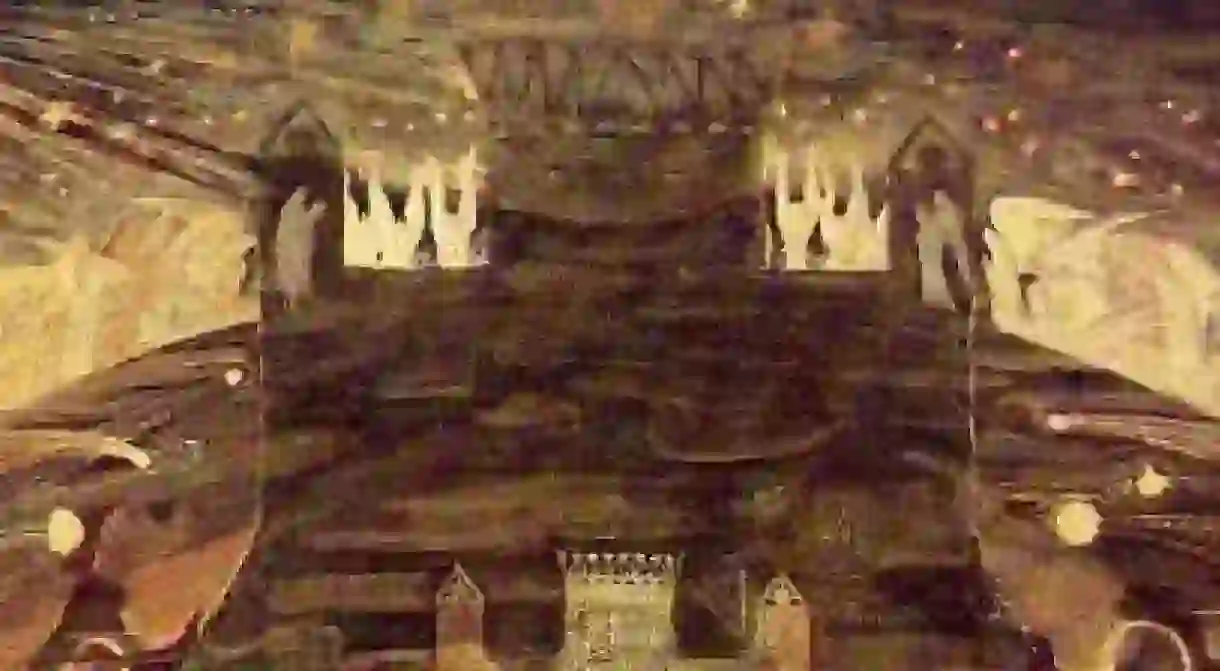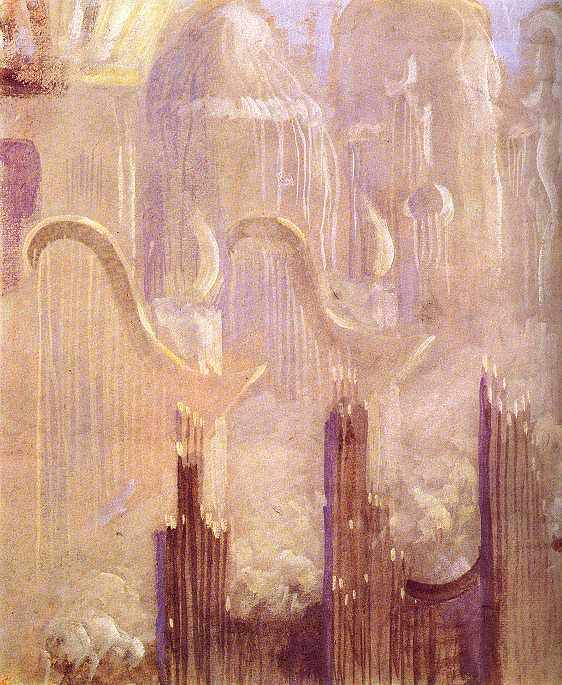Essential Artworks By Mikalojus Konstantinas Čiurlionis To Know

M. K. Čiurlionis was a turn-of-the-century Lithuanian painter and composer considered to have been the greatest artist and one of the best composers in the country to date. His art is symbolic, transcendental and uniquely abstract, requiring a deep analysis. However, at the same time it is strong and moving even for those unfamiliar with the concepts of art. Čiurlionis’ paintings have been displayed at international exhibitions in Spain, Germany, Japan, and elsewhere. We profile some of his essential works.
Rex
Rex (1909) is one of the artist’s best-known works. Taking its name from the Latin word meaning “king”, the painting depicts a mysterious king stretching above the planet Earth and dissolving into the cosmos. Čiurlionis’ king of the universe is a blend of images of god taken from different religions, folk tales and his own personal vision. The contrast between dark and light hues of the painting represents the dualism of the king of the world – both dark and light. The painting displays Čiurlionis’ skill as a symbolist painter and some of the most popular motifs of his art – God, stars, planets, mystical universes, and transcendental images.

Fairy Tale
Also painted in 1909, Fairy Tale depicts two kings; one holding a typical Lithuanian farmstead in the palms of his hands, the other contemplating it while leaning on his sword. The kings’ figures are partly in the shadow, and the only source of light in the painting is the little farm scenery, the light of which is reflected on the kings’ faces bent towards it. The painting is said to represent the high place that Lithuanian archaic folk culture had in Čiurlionis’ art. Nearly all Lithuanian literature, art and traditions came from villages, and the country’s heritage constitutes the principal part of Lithuanian culture. Therefore, it is still a source of light (inspiration) for the greatest of the artists in the nation’s canon.

Creation of the World
The lion’s share of Čiurlionis’ artworks are not individual paintings but parts of cycles of works bearing the same name. One of the most famous and interesting ones of these series is Creation of the World (1905-6). It consists of 13 abstract paintings representing the various stages of the Creation. However, it is not the Biblical creation but a mix of theories taken from different religions and philosophers such as Pierre-Simon Laplace and Immanuel Kant. The series could be divided into the two main stages of creation: the cosmic one and the creation of life, depicting the appearance and development of living organisms on the planet. It is strongly argued that the series do not depict the creation of the world as we know it, but instead that of a fantastical one.

Sonata of the Stars
Čiurlionis’ music and his paintings are inseparable from each other; some of his artwork can be understood the best while listening to their corresponding musical pieces. Therefore, it is not surprising that many of the artist’s paintings are named using musical terms. Sonata of the Stars (1908), a diptych consisting of Allegro and Andante is one of the best examples of this. Allegro (“cheerful, lively, fast” in music) represents planets, clouds and a cosmic tree-triangle that rises towards the all-crowning sun with a golden angel on top. The hues of the painting are very similar to those of ‘Rex’, with intertwining warm browns and yellows. Andante (“at a walking pace, moderate” in musical terms) has a much more subdued color scheme and subject – a lonely angel in the shadow on the top of a planet and in front of the background of a golden triangle, supposedly representing God.

The Truth
The Truth (1905) is the only self-portrait of the artist. It depicts the face and the upper body of a man holding a candle which lights up his face, towards the flame of which multi-colored tiny angels are flying. However, as soon as they reach the flame, the angels burn their wings and fall down. The painting can be interpreted in various ways. However, one of the ways to read it is that the light of the truth is too hard to bear; that the people who search for it eventually realize they can’t handle it and the truth destroys them. Angels are a very common motif in Čiurlionis‘ paintings. They represent beauty, piety and the transcendental world, but can also be the symbol of the fragility of true morality.













